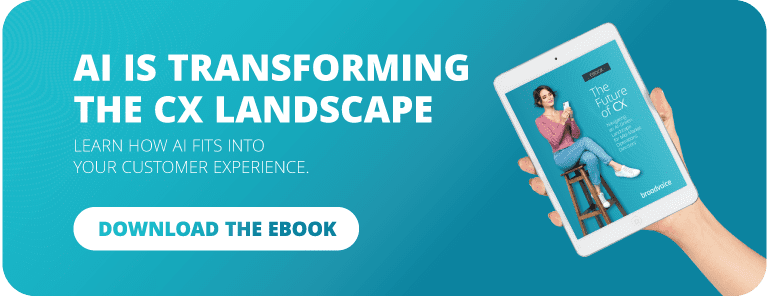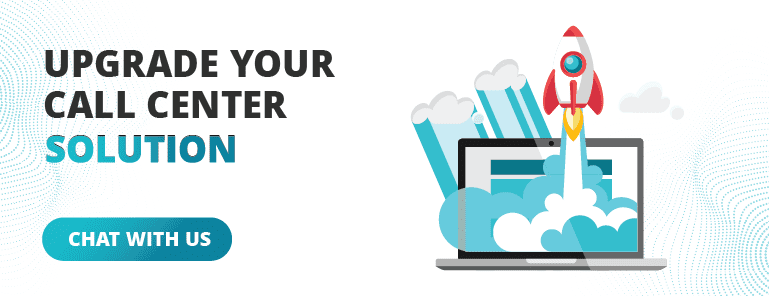Despite the growing number of customer service channels, the classic phone call still wins across all generations of customers. One McKinsey & Co. study of 3,500 consumers found that live phone conversations are the most preferred method for contacting companies about help and support. In other words, call centers aren’t going anywhere.
But the same old ways of managing a call center just won’t cut it anymore. Customer expectations are rising, and the quality of your experience is under scrutiny, determining the success of your brand. And AI continues to disrupt the customer service landscape across every touchpoint.
With all this change and the added pressure of AI, how do you ensure consistent, high-quality service using the tried-and-true voice channel? The answer lies in your call center voice analytics.
What Are Call Center Voice Analytics?
Voice analytics are a form of AI technology that decodes, analyzes, and draws conclusions from your raw voice data collected during customer interactions. With this data, voice analytics generate insights using digestible key metrics.
Voice data in a call center can take many forms, including:
- Call recordings. These are your primary sources of voice data, containing the audio from customer-agent interactions.
- Transcriptions. These are the text versions of your recorded calls, which can be analyzed for keywords and phrases.
- Metadata. This data captures contextual information such as call duration, time, date, and agent details.
Call center voice analytics identifies key phrases, emotions, and sentiments from customers using these different types of voice data. They can also track the overall tone and pace of a conversation. Then, with this info, voice analytics can identify how to improve customer interactions. They’ll highlight areas for agent performance improvement. And, ultimately, they can help boost operational efficiency.
Want to make the most of your call center analytics? Read our blog to learn how.
How Do Call Center Voice Analytics Work?
In a nutshell, here’s how call center voice analytics work:
- The platform records each support call and captures audio data.
- Then, the platform uses speech recognition technology to transcribe spoken words into text or uses AI to track real-time speech patterns.
- A natural language processing (NLP) model then analyzes the spoken words and/or text to uncover key topics, trends, and sentiments.
- The platform then generates reports highlighting insights, trends, metrics, and actionable data.
As you can see, call center voice analytics work on a few different levels, handling both structured data (transcribed text) and unstructured data (tone, pitch, and pace) from a conversation.
There are several forms of analysis happening simultaneously within voice analytics.
- Speech-to-text analytics convert spoken language into text for further analysis. Speech-to-text helps call centers track keywords, analyze trends, and document interactions.
- Sentiment analysis examines the tone of a customer’s words. By tracking sentiment, call centers can gauge satisfaction or frustration levels in real time.
- Keyword spotting recognizes specific words and phrases in spoken language. These keywords can help categorize calls and trigger actions like escalations or PII alerts.
- Call journey mapping tracks the path of a customer interaction. From the moment a call begins until it ends, analytics help you understand the customer journey, identify pain points, and improve processes.
When all these tools work together, call center voice analytics help you uncover essential information and transform your CX.
How Call Center Voice Analytics Help Improve Your CX Game
It’s no secret that customer experience matters. Up to 73% of customers point to experience as one of the most important factors in their purchasing decisions. And 65% find a positive experience with a brand to be more influential than great advertising.
To deliver unforgettable CX, you need to understand your customers. on a granular level. And that’s why voice analytics are a worthy investment. With this tool, you can:
- Tailor customer interactions using sentiment analysis and keyword trends to identify preferences and emotions.
- Improve agent performance using insights for more targeted coaching and training.
- Drive operational efficiency by identifying trends, bottlenecks, and common issues to optimize your processes.
Discover how to boost your CSAT and ops with call center data analytics.
A Step-by-Step Guide to Find and Use Your Voice Data
Ready to get started? Here are four steps to help you find and use your voice data.
Step 1: Define Your Objectives
To effectively use analytics and avoid wasting resources, start by setting a clear goal. Identify what you hope to achieve. Are you looking to improve your CSAT score? Do you want to create a more targeted agent coaching program? Are you hoping to improve specific KPIs like AHT or FCR?
Work as a team to define clear objectives. These goals will keep your analysis focused so you can extract the most relevant data and meet your desired outcome.
Step 2: Find a Provider and Choose the Right Tools
Your partner can make (or break) your experience with voice analytics. Research, interview, and assess different providers to know you’re selecting the right tool for your needs.
Here are a few must-have features that will make the investment worthwhile:
- Real-time analytics. Solve problems as they happen with real-time analysis. Find a platform that analyzes calls as they happen, letting you act immediately on insights.
- Integration capabilities. Work with your IT team to determine your ideal data flow. Then, look for a tool that seamlessly integrates with your existing CRM and call center software.
- Customization options. No call center team is the same. Look for solutions that allow you to customize analytics and reports to your specific needs, such as tracking certain keywords or emotions.
- Scalability. Find a platform that can grow with your business. Ensure it can handle increasing volumes of data without compromising performance quality.
Want a tool that scales with you? Meet Broadvoice.
Step 3: Pull, Analyze, and Interpret the Data
With your tools ready, now it’s time to collect and analyze your voice data. Collect call recordings, transcripts, and metadata. Then, let voice analytics do their job.
Watch for trends, patterns, and anomalies that align with your predefined objectives. Give agents access to sentiment analysis tools to gauge customer emotions during interactions and adjust their approach. Use keyword analysis to track common issues. Start mapping the customer journey and then assess the overall quality of interactions.
Step 4: Implement Insights and Monitor Progress
Now that you have data-backed insights, it’s time to use them. Here are a few ideas:
- Adjust and A/B test the effectiveness of different agent scripts. Then, use the results to provide additional training for agents or tweak processes to improve efficiency and quality.
- Analyze customer sentiment to gather feedback. For example, if customers are repeatedly frustrated with your billing processes, you can use this information to your advantage. Go back to the drawing board, connect with your finance team, and make improvements.
- With keyword analysis, you can identify complaint patterns. For instance, if customers frequently use a feature’s name, it may indicate the feature needs updating. Pass this information along to your product team so they can investigate further.
- Use NLP and sentiment analysis to uncover customer preferences and needs. Then, personalize interactions and tailor your approach for faster resolutions and cross-selling.
With your call center voice analytics at work, the fog of overwhelming data will begin to clear. Insights and patterns you didn’t know existed will become evident. And your CX game will improve.












